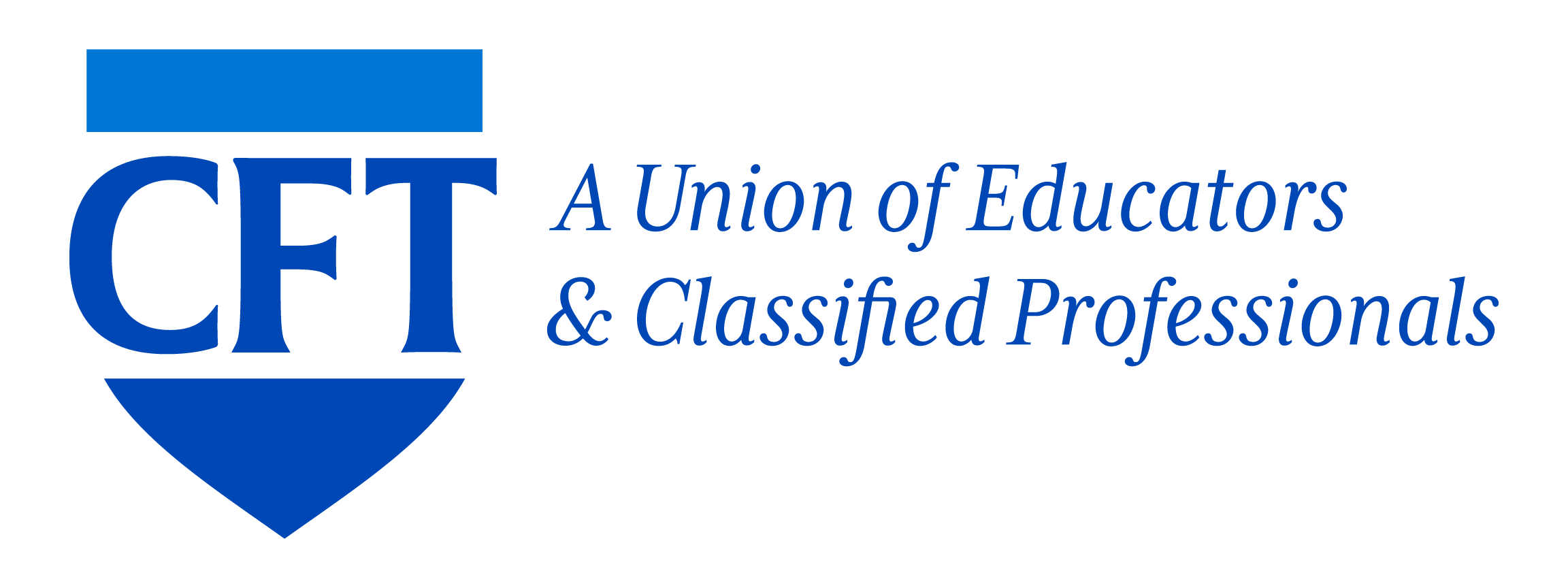Yvonne Schmeltz, Member Advocate of AFT Guild Local 1931, started out as a clerical assistant and then an administrative assistant to a Dean. This meant she learned about the different work classified professionals do.
So, when the opportunity came up, Schmeltz applied to be part of the CFT Ratio Work Group, made up of different stakeholders figuring out adequate staffing for both K-12 and community colleges.
She felt her perspective is unique having been on the AFT Guild Executive Council and representing classified workers. She says advocating for classified staff is one of her favorite parts of the job.
“I learned a lot about the different sorts of classified positions that exist, so repping facilities folks and getting their perspective, and repping office technical folks and getting their perspective, and repping some of our trades folks,” she said. “I just felt like I was able to speak to the different types of classified, and I think that’s one of the biggest struggles. Because you can’t just say there’s one ratio that works for people who sit behind a desk and assist people versus folks who are cleaning buildings that are 380,000 square feet.”
The work group came about after legislation passed to create it. The need for the group became apparent during COVID with people in classified jobs often the first to be let go and last hired back, meaning more work for the people who remain, says Mitch Steiger, CFT’s legislative representative. The group has met by Zoom twice and will schedule at least two more meetings to come up with some recommended staffing ratios that CFT and other educational unions will be able to use whether in collective bargaining or in budget talks.
Like Schmeltz, Pamela Ford, president of Antelope Valley College Federation of Classified Employees, says her experience on committees dealing with staffing and as a grievance officer working with maintenance and operations, gives her a familiarity with different classified positions. She has seen the impact staffing ratios have on classified professionals.
“From 2008 to 2025, our campus size has doubled, but the custodians’ positions haven’t, so the district always says they’re relying on staffing ratios and they’re meeting them,” Ford said. “In the fiscal downturn in 2008, the district reduced the hours of some of the classified employees, and instead of lessening the load, they increased the workload on others.”
Another member of the work group, Roy Dietz, president of the El Camino Classified Employees, is the only locksmith at El Camino College, handling 15,000 doors. That’s too much for one person, he says, so the work often gets contracted out.
Figuring out the right numbers for staffing ratios is challenging with so many variables, Dietz says, especially for both K-12 and community colleges.
“If you have one plumber, one electrician, one painter, one locksmith, how many trades people should you have underneath them?” he said. “Should it be one person to help with all the different trades or should it be one person for each trade?”
The members of the group say while it’s demanding, they are excited to participate and influence change.
